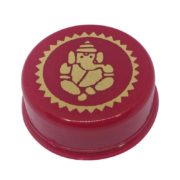Maintaining an electric stove repair is crucial for ensuring its longevity and performance. From cooking daily meals to preparing special dishes, the electric stove is an indispensable part of many households. However, like any other appliance, it can encounter issues over time. This guide aims to provide a thorough understanding of common problems, diagnostic techniques, repair methods, and preventive measures for electric stoves. Whether you’re a DIY enthusiast or prefer calling a professional, this guide will equip you with the knowledge you need to keep your stove in top condition.
Understanding Electric Stoves
Types of Electric Stoves
Electric stoves come in various types, each with its own unique features and benefits:
- Coil Stoves: These stoves have exposed heating elements that are easy to replace but can be difficult to clean.
- Smooth Top Stoves: Featuring a flat, glass-ceramic surface, these stoves are easy to clean but require careful handling to avoid scratches.
- Induction Stoves: These stoves use electromagnetic fields to heat pots and pans directly, offering efficient and precise cooking.
Basic Components
Electric stoves consist of several key components:
- Heating Elements: Responsible for generating heat, these elements can vary in design based on the stove type.
- Thermostats: These regulate the temperature, ensuring consistent cooking.
- Control Knobs: Used to adjust settings and control the stove.
- Power Supply: Ensures the stove receives electricity to function.
How Electric Stoves Work
Understanding the working mechanism of electric stoves can help in diagnosing and repairing issues. Essentially, electric stoves convert electrical energy into heat, which is then transferred to the cookware. The heating elements, controlled by thermostats and control knobs, play a crucial role in this process.
Common Problems with Electric Stoves
Electric stoves, despite their reliability, can experience several common issues:
- Stove Won’t Turn On: This can be due to power supply issues, faulty wiring, or blown fuses.
- Inconsistent Heating: Often caused by malfunctioning thermostats or heating elements.
- Faulty Heating Elements: Broken or worn-out elements can hinder cooking performance.
- Broken Control Knobs: These can become loose or unresponsive over time.
- Malfunctioning Thermostats: Incorrect temperature regulation can lead to overcooked or undercooked food.
- Electrical Issues: Faulty wiring or connections can disrupt the stove’s functionality.
- Surface Cracks and Damages: Common in smooth top stoves, these need prompt attention to prevent further damage.
Diagnosing Electric Stove Issues
Proper diagnosis is essential for effective repair. Here are some steps to identify common problems:
- Visual Inspection: Look for obvious signs of damage or wear.
- Testing the Power Supply: Ensure the stove is receiving electricity by checking the power cord and outlet.
- Checking the Heating Elements: Inspect for visible damage and test continuity with a multimeter.
- Evaluating the Thermostat: Use a multimeter to check for proper functioning.
- Inspecting Control Knobs and Connections: Ensure all knobs and connections are secure and functioning.
- Using a Multimeter for Diagnosis: A multimeter can help identify electrical issues by measuring voltage, resistance, and continuity.
Repair Tools and Equipment
Having the right tools is crucial for effective stove repair. Here’s a list of essential tools and equipment:
Basic Tools
- Screwdrivers: For removing and securing screws.
- Pliers: Useful for gripping and bending wires.
- Wrenches: Needed for tightening or loosening bolts.
Advanced Tools
- Multimeter: For measuring electrical values and diagnosing issues.
- Wire Stripper: Essential for repairing or replacing wiring.
- Voltage Tester: Ensures the stove is safe to work on by detecting live wires.
Safety Gear
- Gloves: Protect your hands from sharp edges and hot surfaces.
- Safety Goggles: Shield your eyes from debris and sparks.
- Fire Extinguisher: Always have one nearby when working with electrical appliances.
Safety Precautions
Safety should always be a priority when repairing an electric stove. Follow these guidelines to ensure a safe repair process:
- Unplugging the Stove: Always disconnect the stove from the power source before starting any repair work.
- Proper Handling of Tools: Use tools correctly to avoid injury.
- Working in a Ventilated Area: Ensure good ventilation to avoid inhaling any fumes.
- Avoiding Electrical Hazards: Be cautious of exposed wires and live circuits.
- Using Protective Gear: Wear gloves and safety goggles to protect yourself from potential hazards.
Step-by-Step Repair Guides
Replacing Heating Elements
Coil Stove Elements
- Unplug the Stove: Ensure the stove is disconnected from the power source.
- Remove the Old Element: Lift and pull out the faulty element.
- Install the New Element: Insert and secure the new element in place.
Smooth Top Stove Elements
- Unplug the Stove: Disconnect from the power source.
- Remove the Top Panel: Carefully lift and remove the smooth top surface.
- Replace the Element: Disconnect the old element and connect the new one.
Induction Stove Elements
- Unplug the Stove: Ensure no power is connected.
- Access the Element: Remove necessary panels to access the element.
- Install the New Element: Replace the old element with the new one, ensuring all connections are secure.




